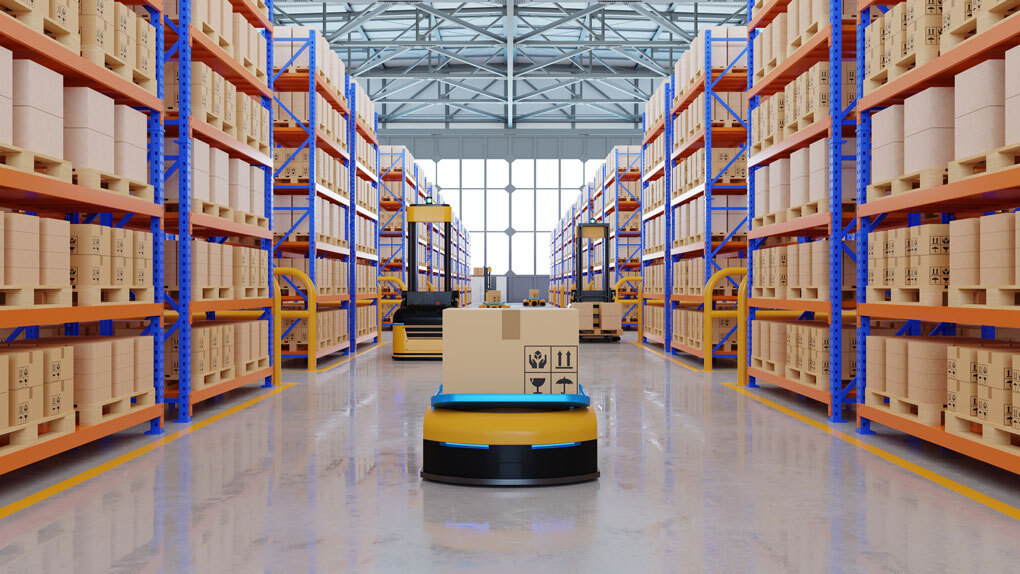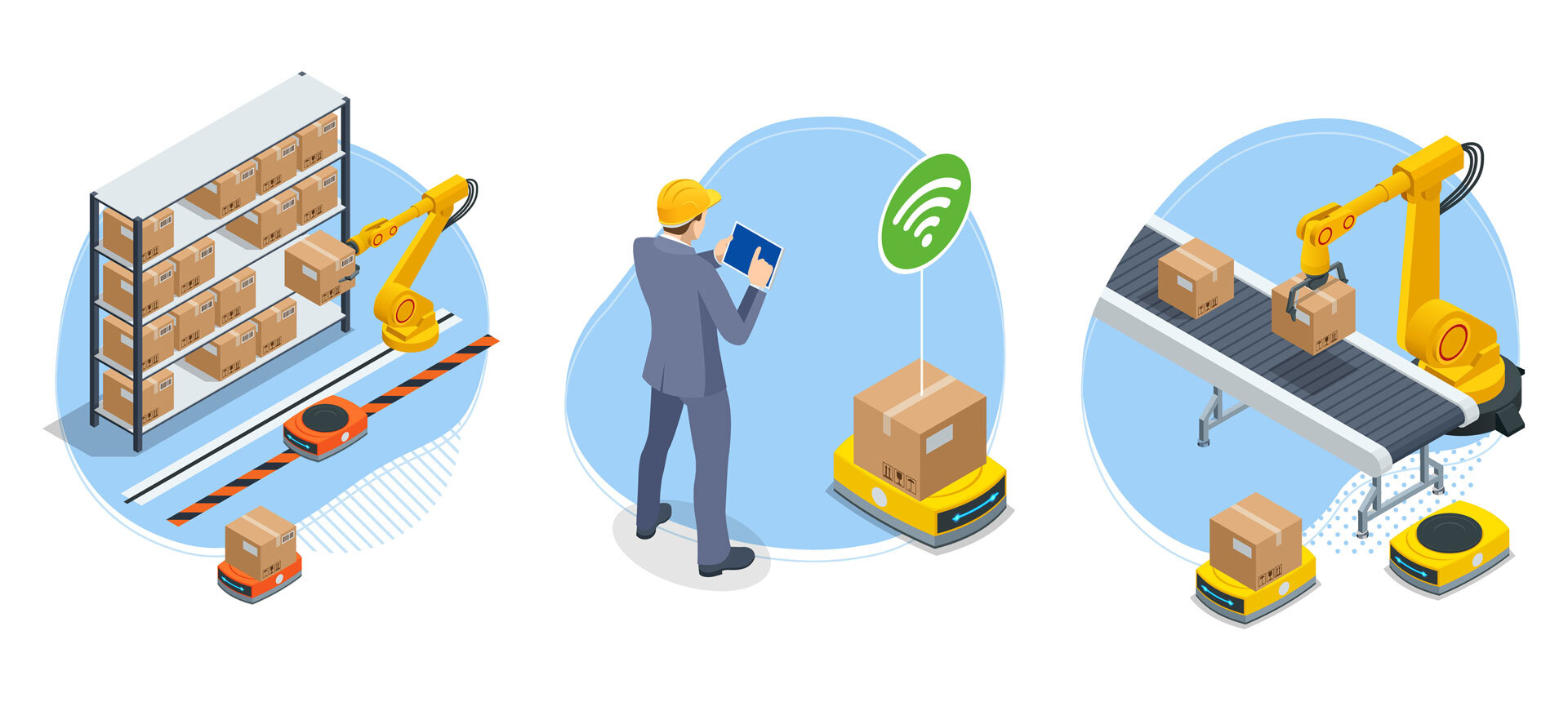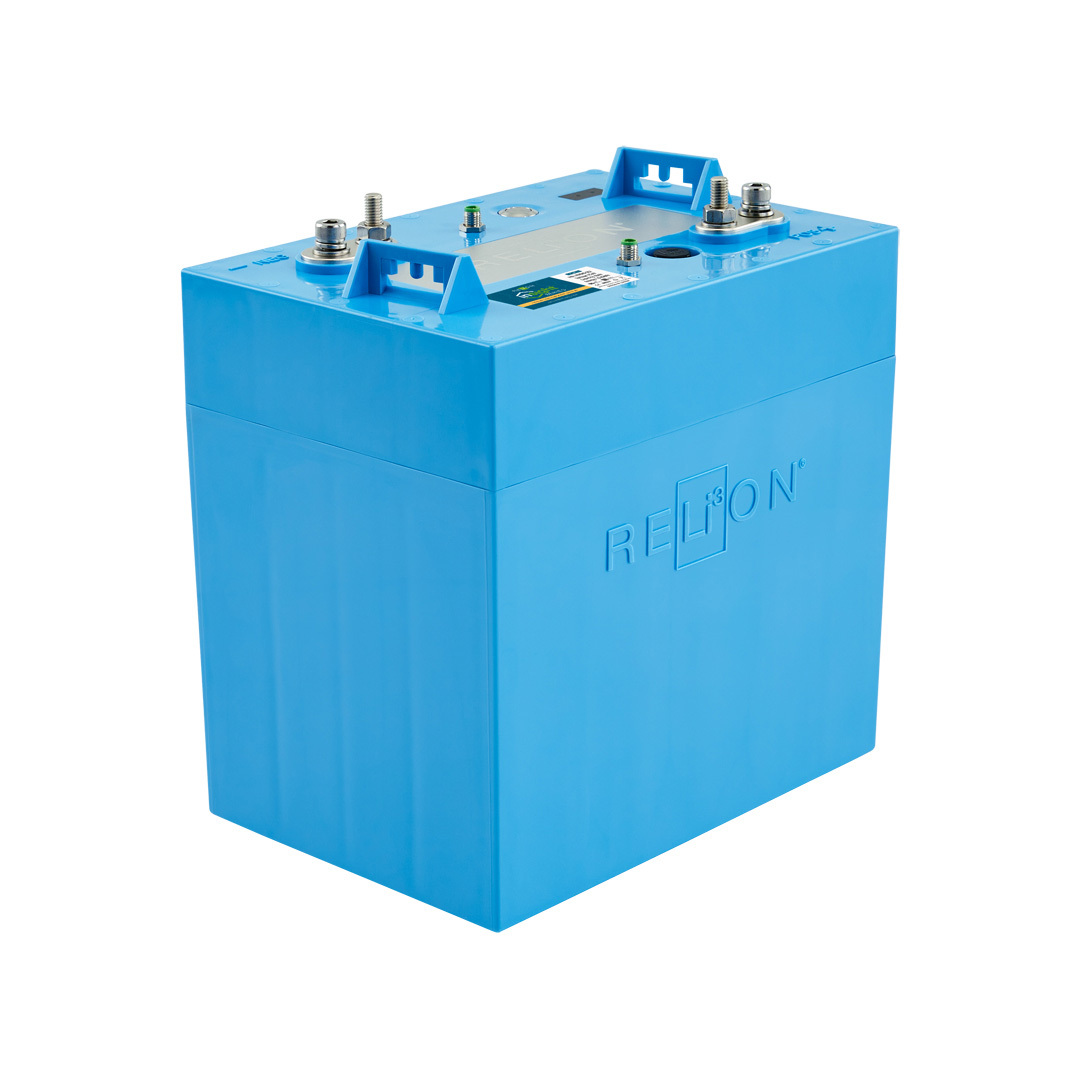As online shopping has increased, so has the need for large and efficient distribution centers and warehouses that can support the business community. With these significant increases has come the use of warehouse robotics that helps ensure higher outputs and increased productivity. One method of dealing with the increased pressure placed on logistics centers is reliance on autonomous mobile robots (AMR) and automated guided vehicles (AGV) that help warehouses and distribution centers work faster and smarter - all while saving on labor costs. However, AGVs and AMRs require a reliable and long-lasting power source to ensure minimal downtime and maximum efficiency. Below we will cover the rise of AMRs and AGVs in warehouses and logistics facilities in recent years, how AGVs and AMRs operate and differ from one another, and how lithium batteries for material handling are seamlessly fueling the growth of AMRs and AGVs, providing significant benefits for businesses in the process.
The Rise of AGVs and AMRs
The robotics industry has grown in size over the last few years, reaching $21 billion in 2021, much of which is linked to the growth in e-commerce and the higher use of distribution centers and warehouses. Industry leaders expect the trend to grow, and believe this figure will triple by the end of the decade, reaching over $60 billion. The news is even better for the AMR and AGV markets, as they are expected to grow at an annual rate of 30 percent over the next five years alone.
So are AMRs and AGVs really worth all of the hype? For the warehouse and distribution industries, the answer is a resounding yes. The increase in e-commerce demands has meant a boom in business but also has meant more time on labor costs, dealing with restrictive regulations and training time as well as human error. Automation through the use of AGVs and AMRs allows for a large chunk of these issues to be reduced, leading to large savings on small and entry-level labor positions. In turn, this ensures that human workers are able to focus their attention on higher-level tasks. Automation creates an efficient solution to the increased demands placed on the logistics industry.

What Are AGVs and How Do They Operate?
AGVs are not a new concept and have been used for over 70 years in warehouses, distribution centers, and industrial settings to move heavy objects. An AGV can be a cart, a forklift, or any other kind of movable vehicle and is used to transport items without there being any need for a human operator. AGVs are generally battery-powered and navigate a facility using radio signals or sensors that follow tape that guides them along their routes. AGVs can be used for the movement of many goods, but they are often most useful for heavy loads that need to be taken down predetermined paths.
AGVs offer warehouses and distribution centers a safe and cost-effective solution to their material handling needs. These autonomous driving vehicles move in a careful and controlled manner that allows them to operate at peak efficiency all while reducing the cost of labor for tasks that would otherwise be assigned to an entry-level staff member.
What Are AMRs and How Do They Differ From AGVs?
An AMR is a robot that can be used in a logistical center for order pickups in a very dynamic manner. While AGVs follow predetermined paths, AMRs move around with far fewer restrictions and no preset paths that limit them. Instead, an AMR can navigate a facility via maps that its software constructs on-site or via pre-loaded facility drawings in order to find the most efficient route to traverse on its own.
AMRs work with human operators to take care of tasks like sorting, e-commerce, and order pickups. These systems are also very flexible and as such, their route options can be easily changed to adjust to new needs. AMRs are particularly useful for facilities that need precision in the robots’ movements in their centers, and AMRs have a reputation for offering just that. It is this precision and reliability that has led not only to logistical centers’ reliance on them, but also hotels, hospitals, and more.

How Lithium Batteries Support AGV and AMR Systems
But what runs all of the critical power needed to operate this automation? Distribution centers need constant, reliable, and low-maintenance batteries that can ensure uninterrupted power for all of the autonomous devices in their facilities. Particularly as AGVs function without human operators, it is vital that they are able to work at peak performance throughout the day. In order to do this, there has to be a reliable source of energy powering the battery that the AGV runs on. Even AMRs that do work in coordination with a human operator need a reliable source of energy in order to offer uninterrupted support to logistics teams. Fortunately, lithium-ion batteries offer substantial benefits over lead-acid batteries for the logistics and warehouse industries. Lithium-ion batteries provide superior charging times, longer-lasting energy, lower maintenance, and greater energy density, all of which are essential for a logistical center that aims for lower costs, utmost efficiency, and precision in day-to-day operations.
- Shorter Charging Times
- Longer-lasting, reliable energy
- Lower maintenance means higher productivity
- Superior Battery Energy Density
Shorter Charging Times
Compared to alternative choices, lithium-ion batteries charge at a much faster rate, as a full charge can be achieved in as little as one to two hours. RELiON lithium phosphate batteries (LiFePO4) can be fully charged in as little as one hour, which allows for more flexibility and control in AMR/AGV operations. This faster-charging capability ensures more productivity and far less idle time, both of which increase efficiency and save warehouses money.

Longer Lasting, Reliable Energy
Once charged, a lithium-ion battery can supply energy that lasts as long as 20 hours. A lithium battery can then shorten the time needed between charges and ensure uninterrupted productivity by the AVGs/AMRs in the facility. This means that a single lithium-ion battery can accommodate the needs of multiple shifts at a facility without needing to be recharged. Fast charge times and long-lasting energy work together to create a powerful energy solution for robotics in any warehouse or distribution center.
It is not just the long-lasting energy from a single charge that makes a LiFePO4 battery ideal for the heavy workloads that they support in warehouses, but also that lithium batteries have a greater lifespan than lead-acid batteries. Lithium batteries have a cycle life that is on average around 3,500 cycles, depending on usage, which ensures fewer replacements and therefore significant replacement costs avoided. Any need to replace a battery in an AMR/AVG is time-consuming because downtime hinders productivity. This is another problem that can be avoided with lithium batteries, which offer significantly longer lifespans.
Lower Maintenance Means Higher Productivity
Lithium-ion batteries also address productivity by making sure that AMRs and AVGs do not need to stop at midday for charging purposes. Unlike lead-acid batteries, lithium batteries also do not require watering and can exist in partial states of charge without sustaining damage. Lithium batteries can also be used up to their full rated capacity without harming the battery, whereas lead-acid batteries need to be closely monitored to ensure they are only discharged up to 50 percent. The time spent on monitoring and maintaining non-lithium batteries can accumulate, which ultimately ends up costing a great deal in labor costs and lost productivity.
Superior Battery Energy Density
Energy density refers to the amount of energy that a battery holds in comparison to its overall weight. Lithium-ion batteries have a significantly higher density compared to lead-acid batteries, with the latter generally being around 40 Wh/kg on average, while a lithium battery is around 100 Wh/kg. A lithium-ion battery, therefore, has a significantly higher battery density than lead-acid or other battery choices for industrial settings, which translates to more power available per square foot as well as better capability in maximizing warehouse floor space.
In sum, lithium-ion batteries offer faster charging, lower maintenance, higher energy density, and longer-lasting charges, all of which help logistics facilities operate at maximum levels of production and operation. Coupling lithium-ion batteries with AMRs and AGVs ensures that robotics systems purely support and strengthen logistics facilities’ performance and do not become a roadblock to efficiency. As a result, AMRs and AGVs that leverage lithium-ion batteries help to secure a decrease in labor costs and an increase in overall facility productivity.
RELiON’s lithium-ion batteries are a case in point, as they offer this very level of reliability, which is why the company was able to form a partnership with the Hyster-Yale Group, which designs, manufactures, and sells lift trucks, many of which are used in warehouses. This choice was made because lithium-ion batteries have shown they offer faster charging, minimal maintenance, and longer battery life, all of which provide facility managers and robotics operators with more time to focus on activities that generate profit, and less time spent on activities that reduce productivity. To get started with integrating reliable lithium-ion batteries into your operations and logistics, get in touch with a RELiON expert today.
